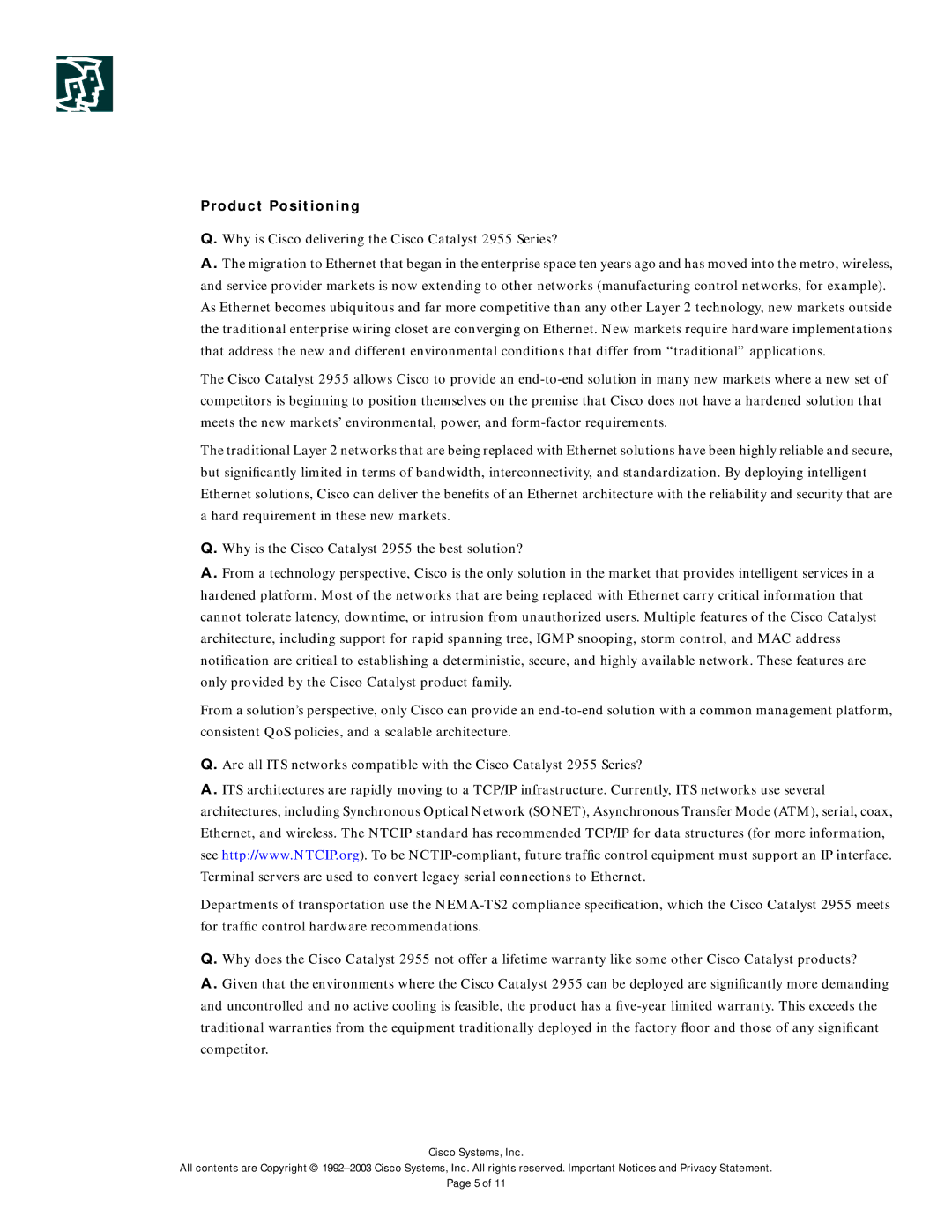2955 specifications
The Cisco Systems 2955 series, a robust family of integrated services routers, symbolizes versatility and reliability for businesses in need of scalable networking solutions. Designed to provide a seamless connection for enterprise branches, the 2955 series is engineered for superior performance, security, and low operational costs, making it an ideal choice for businesses aiming for efficiency.One of the standout features of the Cisco 2955 is its modular design, which allows for the customization of WAN and LAN interfaces. This flexibility enables enterprises to adapt their networking capabilities as their requirements evolve. The router supports a variety of interface types, including Serial, T1/E1, and EtherSwitch, providing solutions for diverse applications and ensuring compatibility with a wide range of network deployments.
A key technology incorporated into the 2955 is Cisco IOS Software, which delivers advanced routing, switching, and security features. This operating system is foundational for managing network traffic efficiently and ensures high availability, security, and performance. The router also supports Voice over IP (VoIP) applications, facilitating improved communication across the enterprise by enabling businesses to combine voice and data traffic over a single network.
Security is paramount in modern networking, and the Cisco 2955 series does not disappoint. Integrated security features, such as VPN support, firewall capabilities, and intrusion prevention, provide a comprehensive approach to protecting enterprise networks from threats. The router also supports secure access methods, ensuring that only authorized users can connect to the network.
In addition, the Cisco 2955 is designed with enhanced management features. The integration of tools for network monitoring and troubleshooting simplifies the management of complex network environments, enabling IT teams to maintain optimal performance and quickly resolve issues.
With support for Power over Ethernet (PoE), the 2955 can power connected devices directly through the Ethernet cables, reducing the need for separate power sources and simplifying deployment for devices like IP phones and wireless access points. This capability enhances the overall efficiency of network infrastructure while contributing to a reduction in operational costs.
In summary, the Cisco Systems 2955 series stands out as a powerful and flexible router solution for enterprises seeking reliability and advanced features. With its modular design, integrated security, and support for various network technologies, the 2955 enables organizations to build robust and scalable networks that can adapt to the evolving demands of their operations.
